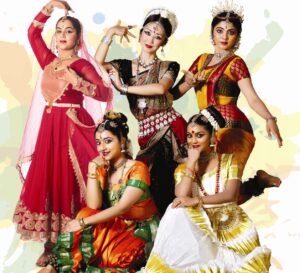Traditional and folk dances are windows into the heart of a culture, reflecting the customs, history, and spirit of communities worldwide. These dances, often passed down through generations, offer a glimpse into the daily lives, celebrations, and struggles of the people who perform them. Here, we explore some of the most captivating traditional and folk dances from various corners of the globe.
Asia
1. Kathak (India)
Kathak is one of the eight classical dances of India, originating from the northern regions. It combines elements of storytelling, rhythmic footwork, and intricate hand gestures. Performers often wear elaborate costumes and jewelry, creating a visual spectacle that is both mesmerizing and deeply rooted in Indian culture and mythology.
2. Fan Dance (China)
The Fan Dance, known as “Shan Dian” in Mandarin, is a traditional Chinese dance that incorporates the use of fans as a primary prop. This dance, often performed during festivals and celebrations, symbolizes grace, beauty, and the changing of seasons. The fans, manipulated with precision and elegance, add a dynamic visual element to the performance.
Africa

3. Adumu (Maasai, Kenya and Tanzania)
The Adumu, or “Jumping Dance,” is a traditional dance performed by the Maasai people of Kenya and Tanzania. This dance is part of the Eunoto ceremony, marking the transition of young men into warriors. The dancers, clad in their distinctive red shukas and beaded jewelry, leap into the air in a display of strength and endurance.
4. Gumboot Dance (South Africa)
Originating from the gold mines of South Africa, Gumboot Dance, or “Isicathulo,” is performed by workers who use their boots to create rhythms and beats. This dance became a form of communication and expression, evolving into a powerful symbol of resistance and solidarity during apartheid.
Europe
5. Flamenco (Spain)
Flamenco is an expressive and passionate dance form from the Andalusian region of Spain. It blends intricate footwork, hand clapping (palmas), and guitar music with powerful vocals. Flamenco reflects the diverse cultural influences of the region, including Gypsy, Moorish, and Jewish traditions, and is often performed in tablaos or during festivals.
6. Irish Stepdance (Ireland)
Irish Stepdance gained international fame through shows like “Riverdance.” Characterized by its rapid leg and foot movements while maintaining a rigid upper body, this dance is performed solo or in groups. Traditional Irish music, with its lively rhythms and melodies, accompanies the dancers, creating a spirited and energetic performance.
The Americas
7. Samba (Brazil)
Samba is the heartbeat of Brazilian culture, particularly during the annual Carnival in Rio de Janeiro. This dance, with its African roots, is a vibrant and rhythmic celebration of life. Samba dancers, adorned in colorful and often extravagant costumes, move to the infectious beats of percussion instruments, captivating audiences with their energy and joy.
8. Square Dance (United States)
Square Dance is a popular folk dance in the United States, particularly in the southern and western regions. Dancers form squares of four couples and follow the instructions of a caller, performing synchronized steps and patterns. This dance, which has roots in European folk traditions, is a staple at community gatherings and country fairs.
Oceania
9. Haka (New Zealand)
The Haka is a traditional war dance of the Māori people of New Zealand. It involves vigorous movements, rhythmic chanting, and facial expressions, including the protruding of the tongue and wide-open eyes. Originally performed by warriors before battle, the Haka is now used in various ceremonies and as a symbol of Māori identity and pride.
10. Hula (Hawaii)
Hula is a traditional Hawaiian dance that tells stories through graceful movements and chants (mele). There are two main styles: Hula Kahiko (ancient hula) and Hula ʻAuana (modern hula). Dancers often wear grass skirts and leis, and the dance is accompanied by traditional Hawaiian instruments like the ukulele and ipu (gourd drum).
Middle East
11. Dabke (Lebanon, Syria, Jordan, and Palestine)
Dabke is a lively and energetic folk dance common in Lebanon, Syria, Jordan, and Palestine. It is performed in a line, with dancers holding hands or shoulders and stomping their feet in unison to the rhythm of traditional music. Dabke is often seen at weddings and celebrations, symbolizing joy, unity, and heritage.
12. Belly Dance (Egypt)
Belly Dance, or Raqs Sharqi, is a captivating dance form that originated in Egypt. It involves fluid and sensual movements of the hips and torso, often performed by women. Belly Dance has a long history and has evolved over time, blending with various cultural influences. It is now popular worldwide, both as a performance art and a form of exercise.
Conclusion
Traditional and folk dances are more than just artistic expressions; they are vital links to our past, preserving the stories, values, and traditions of diverse cultures. Each dance offers a unique insight into the world it comes from, celebrating the beauty and complexity of human experience. By embracing and preserving these dances, we honor the rich tapestry of global heritage and ensure that these cultural treasures continue to inspire future generations.